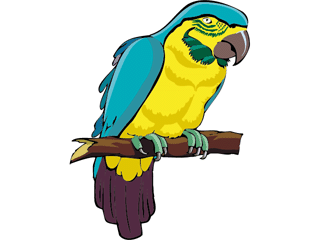Name _____________________________
Reading Worksheet 35-1, 35-2
Section 35-1: The Reptilian Body 
1. Reptiles Share Several Key ________________________
2. Reptiles live in all areas of the world except ___________________________
3. List the 7 key features of reptiles. (fig 35-1)
____________________________________________________________________________
_____________________________________________________________________________
4. Why are reptiles better able to move on land than amphibians?
________________________________________________________________________________
5. Explain how a reptile can change its behavior to regulate its temperature.
_________________________________________________________________________________
6. Based on the graph in figure 35-2, where would you most likely find a lizard
at:
7am: ______________ 2pm : ________________Night :__________________________
7. A Key Adaptation to _______________________ Life Is Water Retention
8. How is the reptile's skin better adapted to living on land than the amphibians?
________________________________________________________________________________
9. This type of egg contains both water and a food supply for the developing
embryo: ____________
10. Match the descriptions to the part of the amniote egg
_____ amnion
_____ yolk sac
_____ allantois
_____ chorion |
a. allows oxygen to enter the egg and carbon dioxide to leave
the egg
b. a membrane that encloses the embryo within a watery environment
c. contains the developing embryo's food supply
d. a membrane-covered cavity that stores waste products from the embryo
and serves as the embryo's organ for gas exchange |
11. Reptiles Need More _____________________ than Amphibians. Why? _________________________________________________________________
12. How many chambers does a reptilian heart have? ____________________
13. Blood that has been oxygenated in the lungs returns to the heart and enters
the ______________________, from there, the fresh blood enters the ______________________,
and then is pumped to the ______________________ (See figure 35-5)
14. Reptiles have ____________________________ Fertilization.
15. Compare oviparous to ovoviviparous.
________________________________________________________________
 Section
35-2: Today's Reptiles
Section
35-2: Today's Reptiles
16. Lizards and Snakes Have a Unique _____________ Design
17. What is the world's largest snake? _____________________________________
18. How is the jaw of snakes and lizards unique? _______________________________________
19. What is the largest monitor lizard? ________________________________________
20. How are snakes and lizards alike? ______________________________________
______________________________________________________________________
21. Give two examples of constrictors: ___________________________________
22. Of the 13 families of snakes, only ______ are venomous. Name two types of
venomous snakes. ____________________________________________________________________
23. Other Orders of Reptiles are Less ________________
24. What is the difference between a turtle and a tortoise?
_________________________________________________________________
25. The upper part of the turtle's shell is called a _______________________
and the lower part is called the __________________________
26. Of living reptiles, which is the most closely related to dinosaurs? _______________________
27. Describe how crocodilians capture prey. __________________________________
___________________________________________________________________________
28. Describe how crocodilian bodies are adapted to the way they hunt.
______________________________________________________________________
29. How are crocodiles different from alligators (see fig 35-11)?
_________________________________________________________________
30. How are tuataras different from other reptiles?
_________________________________________________________________
See "Up Close: Timber Rattlesnake" (page 790-791
31. What is the purpose of the rattlesnake's pit organ? _______________________
32. What is the purpose of the Jacobson's organ? ___________________________
33. What are the effects of rattlesnake venom? ______________________________
_________________________________________________________________
34. Why do some rattlesnakes have longer rattles than others? __________________
_________________________________________________________________
35. In what region of the US does a timber rattlesnake live? ______________________________
What is the rattlesnake's preffered habitat? _______________________
 Name
____________________________
Name
____________________________
Section 35-3: Characteristics and Diversity of Birds
1. Birds Share Several Key ______________________. List 4 of them.
_______________________________________________________________
_______________________________________________________________
2. Feathers are modified reptilian ___________ and develop from tiny pits called
____________________.
3. Match the feather to its description.
____ down feathers
____ flight feathers
____ countour feathers |
a. covers the body and gives the bird shape
b. provides insulation
c. specialized countour feathers found on the wings and tail |
4. Why does a bird put oil on its feathers?
_______________________________________________________________
5. What is preening?
_______________________________________________________________
_______________________________________________________________
6. Name two structures on the bird skeleton that no other living vertebrate
has.
_____________________________________________________________________
7. What purpose does the large keeled breastbone serve? (fig 35-15)
_____________________________________________________________________
8. What is an endotherm?
______________________________________________________________
9. In the avian heart, oxygen poor blood from the body enters the ________________,
from there it travels to the _______________________ and then goes to the _________________
(See fig 35-16)
10. Why do birds have a much higher demand for energy than other animals?
______________________________________________________________
11. How far can migrating birds fly? _________________________
12. Use the picture of the Avian Lung Structure (fig 35-18) to answer true
or false to the following statements.
______ During inhalation, fresh air is pulled into the anterior air sacs.
______ Fresh air enters the lungs through the trachea
______ During exhalation, fresh air from the posterior air sacs enters the lungs.
______ During exhalation, fresh air from the anterior air sacs enters the lungs.
"Up Close: Bald Eagle"
13. What is the most important sense in the bald eagle? _____________
14. What do bald eagles eat? __________________________
15. What does the eagle use its curved beak for? ___________________
16. What is the function of the cerebrum? ____________________________
17. What substances exit the cloaca? _______________________________
18. What is the function of the crop? ________________________________
19. What is the function of the gizzard? ______________________________
20. Birds are Adapted for Different Ways of ___________
21. _______ % of all birds belong to the Passeriformes group, also known as
_________________.
22. Describe the beaks of carnivorous birds.
______________________________________________________________
23. Describe the feet of songbirds. What are they adapted for?
______________________________________________________________
24. What are long legs, like those on a heron, adapted for?
______________________________________________________________
25. Songbirds have two different types of beaks, describe the beaks and the
diet each is adapted for.
______________________________________________________________
______________________________________________________________
______________________________________________________________
 Section
35-2: Today's Reptiles
Section
35-2: Today's Reptiles
 Name
____________________________
Name
____________________________